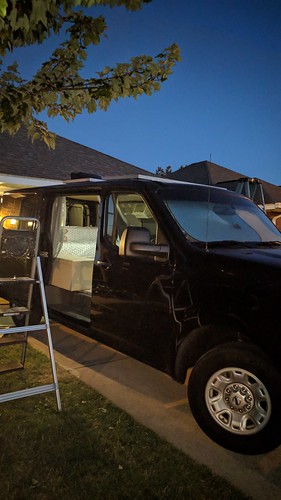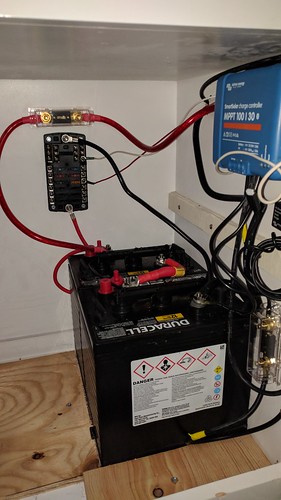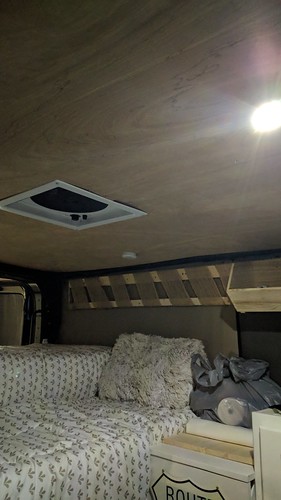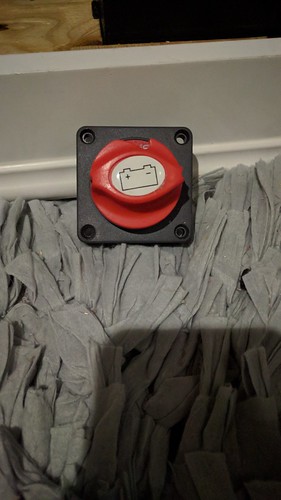MPPT is just a different way of doing it and needs to be understood. Instead of seeing the two types of systems as warring factions we should be looking at them as what they are, options with different positives and negatives for each. Many of the reasons against small system MPPT have gone out the window since you could get a MPPT controller for $100 or less and that happened 5 years ago with the release of the Eco-worthy 20a MPPT controller. It is that controller and now several more that make some of the blogs like Handy Bob's outdated. At the time the cost of a MPPT controller made the advantage too costly to make it worth while. A extra panel would add more power for the money and even now should be a consideration when looking at a system. Now you can affordably squeeze every last amp out of your system and not break the bank while charging yours.
MPPT has it's place and is the better choice in some situations, I would not argue that but where I take exception is the solar industry has overblown the supposed gains simply because the profit margin is greater and convinced too many people, who believe everything they read that MPPT is the only way to go. Then to make matters worse the industry has created "cheaper" MPPT models to close the gap between PWM & MPPT to get more people buying them and in so doing have created units that are in many cases no more efficient than a high quality PWM meter at a higher cost. And those better quality MPPT meters that may show a better efficiency than many PWM meters, the efficiency is no where near as substantial as the industry (dealers) want you to believe, certainly not enough for me to warrant the added expense which I am happy to apply elsewhere. The other myth I have heard bandied about is that MPPT will make up for inefficient wiring of the system and so too many pay little attention to setting up a solar system well and to gain the most efficiency within the system. Below is from the Bogart Engineering FAQ page on why they have chosen not to produce a MPPT controller which is instructive. Bogart Engineering makes some of the very best solar related products and have the engineering savvy to produce a quality MPPT but have chosen not to.
"C1. The debate rages: which controller is best PWM (Pulse Width Modulation) or MPPT (Maximum Power Point Tracking). Why did you choose PWM technology instead of MPPT for your SC-2030 Solar Charger?
A very good question! They BOTH have good and bad. Plenty of hype has been written already. Here's my (Ralph's) view:
The "good" for PWM: It is simpler and lower cost technology. Under some common circumstances–it can actually deliver more amps to the battery. That could be when:
(1)days are moderate or warm, with few clouds.
(2) batteries are charging at over 13 volts, (in a 12 battery system) which they almost always are when actually CHARGING.
(3) Panel voltage is properly matched to the battery voltage, for example "12V" panels are being used with a 12V system.
PWM is actually more "power efficient" than MPPT–which means less total power loss in the controller itself. So heat sinks in the design can be smaller (and less expensive). Missing in most analysis of MPPT is that there is always a conversion loss with MPPT, which tends to be higher the greater the voltage difference between battery and panels. That's why PWM can actually beat MPPT under circumstances described above.
Some places that analyze MPPT assume that panels with 30V open circuit voltage are being used in a 12V system. Any good MPPT system will easily provide better performance in that case. They also may assume batteries are charging at 12 or even 11 volts, which is unrealistic. Lead acid batteries are typically below 13 volts only when discharging, or perhaps charging with very little charging current–meaning the actual potential gain in amps is not great.
The benefit for MPPT becomes apparent if you use panels not voltage matched for the battery. If they are not, MPPT will utilize more of the potential energy of the panels. For example, if you use 24 volt panels to charge a 12 volt battery system you must use MPPT, otherwise you would be using your panels very inefficiently. If you are trying to use PWM in that case, you are misusing the PWM technology.
Another potential benefit with MPPT is that if distance between panels and batteries is far, smaller wire can be utilized by running panels at higher voltage to the batteries. Running at twice the voltage reduces wire size to 1/4, which for a long run can be a significant saving in copper wire.
If temperatures are low enough, the slightly less power efficiency of MPPT will be compensated by the higher panel voltages, which will result in a little more battery current. But in actual measurements we made using a commonly sold MPPT solar controller, this would occur at temperatures less than 55 F degrees (in full sun, when charging at more than 13 volts), where there is a slight advantage to MPPT in my location (Boulder Creek, near the California coast). As temperature drops below that (in full sun) MPPT will get some advantage, such as could occur at high elevations in Colorado in the winter. Potentially this would be maximum about a 2.5% improvement in amps output for every 10 degrees F lower in temperature (or 4.6% per 10 degrees C colder. I'm using data from Kyocera KD-140 panels.)
There can be theoretically optimal situations (that I don't personally experience where I live) where MPPT could give some advantage: that is when solar current is present, but the batteries are quite low in charge–but because loads are high and even greater than the solar current the batteries are still discharging despite the solar current. Under these conditions the voltage COULD be at 12.5 volts, or even lower. Again, using data from Kyocera panels, ("Normal Operating Conditions") there is a theoretical maximum gain over PWM of 20% current assuming NO MPPT conversion loss and no voltage drop in the wires to the panels, at 20C (68F). With PWM, the voltage drop in the wires in this case would not affect the charging current. Now if in addition you lower the temperature to below freezing at 28 degrees F (while sun is shining) you might actually get up to a THEORETICAL nearly 30% gain while the batteries are discharging.
The only REALLY BAD part of MPPT, is all the hype surrounding it–for example one manufacturer advertises "UP TO 30% OR MORE" power harvested from you panels. If you are using solar panels properly matched to the batteries, 30% ain't gonna happen unless it's EXTREMELY cold. And your batteries have to be abnormally low in charging voltage–which tends not to happen when it's cold (unless you assume the battery is still discharging while solar is happening). Virtually all the analyses I've seen touting MPPT on the Internet ignore the conversion loss, assume really cold temperatures, assume unreasonably low charging voltages, assume no voltage drop in the wires from panels to batteries, use STC conditions for the panels (that the marketing types prefer) rather than more realistic NOCT conditions, and in some cases assume panels not voltage matched to the batteries.
The other thing that is misleading about MPPT, is that some manufacturers make meters that show both the solar current and the battery current. In almost all cases for a well designed MPPT type the battery current will be greater. The engineers making these know better, but it is implied (by marketing types?) that if you were NOT using MPPT you would be charging your batteries with only the SOLAR current that you read on their meters. That's not true, because the PWM BATTERY current should always be higher than the MPPT SOLAR current. It is the nature of the MPPT that maximum power occurs when the current is lower than the maximum, so they must operate there to get the maximum power. So to properly compare the two you need to compare MPPT with an actual PWM controller in the same circumstances.
Finally, the reason we went to PWM is that I was anticipating that panel prices were going to drop (which they certainly have over the last 5-10 years!) and that the small advantage of MPPT (under conditions where the correct panels are used for the batteries) would not justify their additional cost and complexity. So my thinking, for more total benefit per $, put your money in an extra panel rather than a more expensive and complex technology."









